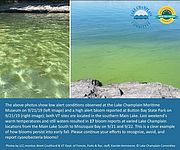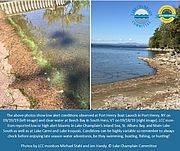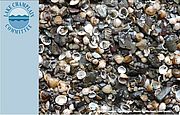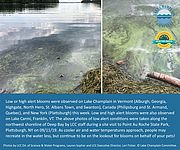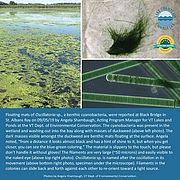Unseasonably warm weekend weather triggered a spate of 17 bloom reports on 9/21 and 9/22. More blooms followed during the week, with some monitors reporting their first blooms of 2019. With temperatures predicted to rise into the 70s on Saturday, we anticipate some blooms will continue to persist for a while and that cyanobacteria may pop up in new locations. Read...
News from Selected Month
The time to prepare for future floods is now. Communities that took steps to protect themselves in advance of Tropical Storm Irene were often able to avoid some of the devastation that confronted their neighbors. Read...
Today marks the global climate strike followed by a week of events to highlight the urgency of climate action. Water is a primary medium through which we feel the effects of climate change. Declining water quality is another consequence of a warming planet. As air temperatures rise, so too do water temperatures. Read...
Has the invasive Asian clam made it into Lake Champlain? Join us in our surveying efforts to find out!
We are teaming up with our friends at Arrowwood Environmental and Magic Hat Brewing Company to comb Burlington area beaches for the invasive mollusk. The program includes training, field time, and lunch! It’s a great way to learn more about Asian clams, how to identify them and what we can do to keep them out of Lake Champlain. Read...
Mixed conditions were reported again this week on Lake Champlain in Missisquoi Bay, St. Albans Bay, and the Inland Sea, and also at Lake Carmi. The floating mats of the benthic cyanobacteria Oscillatoria sp. that we showed you pictures of last week were still present at Black Bridge in St. Albans Bay on 9/10/19, but to a lesser extent. Monitors also observed mixed conditions in the Main Lake North section of Lake Champlain. Read...
Kids are back at school, seasonal staff are leaving beach and park areas, and there’s a hint of fall in the air this first week of September. However, cyanobacteria can still flourish even when autumn colors begin to show on the hillsides which is why the Lake Champlain Committee Cyanobacteria Monitoring Program continues through the end of October. Read...

